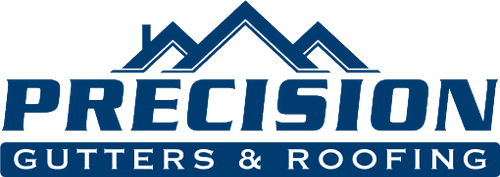As winter looms on the horizon and the chill in the air becomes more pronounced, it’s time to turn our attention to our homes and prepare them for the harsh conditions that accompany the colder months in North Idaho.
One item often overlooked but crucial for maintaining the integrity of your home is the gutter system. Neglecting your gutters during winter can lead to a host of issues, from ice dams to water damage. Fortunately, winterizing your gutters is a straightforward process that can save you from potential headaches down the line. Here’s a comprehensive guide on winterizing your gutters and protecting your home from the winter elements.
1. Clean Your Gutters
The first step in preparing your gutters for winter is to ensure they are debris-free. Leaves, twigs, and other debris can accumulate over the fall months and obstruct water flow. Clogged gutters can lead to ice dams and water backup, potentially causing damage to your roof and home. Schedule a professional gutter cleaning, and consider installing gutter guards to prevent future buildup.
2. Inspect for Damage
Once your gutters are clean, take the time to inspect them for any signs of damage. Look for cracks, rust, or loose connections. Addressing these issues before winter sets in can prevent more extensive damage later on. Replace any damaged sections and tighten loose hangers or brackets to ensure the stability of your gutter system.
3. Install Heat Tape
Ice dams are a common winter woe, especially in regions with heavy snowfall. Installing heat tape along the edge of your roof and in your gutters can prevent the formation of ice dams. Heat tape warms up and melts the ice, allowing water to flow freely through the gutters. This simple addition can save you from the headaches of dealing with ice-related damage.
4. Adjust Downspouts
Redirecting water away from your home’s foundation is crucial in preventing water damage. Ensure that your downspouts extend at least five feet away from your home, guiding water away from the foundation. Consider installing splash blocks or downspout extensions if needed. This simple step can help prevent basement flooding and foundation issues caused by melting snow.
5. Check Seals and Joints
Inspect the seals and joints of your gutters for any signs of wear or damage. Leaks can lead to water infiltration, causing damage to your home’s interior. Replace any worn-out seals and reseal joints using silicone caulk to ensure they are watertight. This small investment in time and materials can prevent costly repairs in the long run.
6. Trim Overhanging Branches
Winter storms can bring heavy snow and ice, increasing the risk of branches breaking and falling onto your roof and gutters. Trim overhanging branches to prevent them from causing damage during winter storms. This not only protects your gutters but also reduces the risk of larger branches causing damage to your roof.
7. Consider Gutter Heaters
For areas with frigid temperatures, gutter heaters or de-icing cables can be a valuable addition. These devices help prevent ice formation by keeping the gutters and downspouts warm. While not necessary for every region, they can be a lifesaver in preventing ice-related damage in colder climates.
As winter approaches, taking the time to winterize your gutters is a proactive step in protecting your home from potential damage. By following these simple steps, you can ensure that your gutters are ready to face the challenges of winter, keeping your home safe, dry, and in good condition for many seasons to come. For more information, visit our website at Precision Gutters and Roofing or contact us today.

